It would be foolish to pick a favourite, and I have not enough space to eulogise about all the beautiful wines we tried but the Zind-Humbrecht Clos Saint Urbain Rangen de Thann Grand Cru 2010 was a spectacular wine.
We were sent to Alsace on a mission to find the 12 best wines from Alsace, to be presented at the (sadly cancelled) ProWein. 120 wines were tasted over the course of two days, the focus being on Crémant, Gewurtztraminer and Riesling – the style and varieties which are currently the focus of the Conseil Interprofessionnel des Vins d’Alsace (CIVA) marketing campaign for 2020.
You can read about this process and the wines we picked here. As with all press and buyer visits there is time to explore the region further with visits to estates and restaurants to sample the local cuisine and soak in the local culture. We were entertained to the local cuisine on the first two evenings, hosted by two separate wineries, Sipp Mack and Cave de Turckheim.
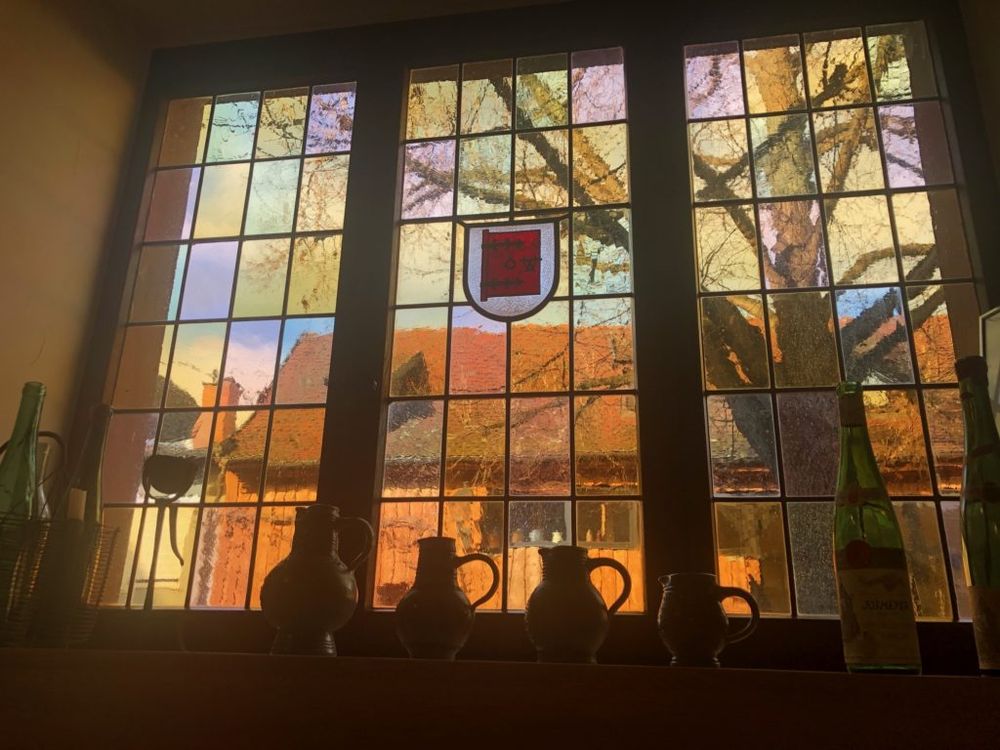
Jacques Sipp of Sipp Mack, was our first host at Restaurant Le Théâtre in Colmar, serving classic Alsatian food, starting us off with a refreshing clean cut Brut Natural Cremant d’Alsace, this was focused with a touch of brioche on the background. I really enjoyed his easy drinking Sipp Mack Sylvaner Vieilles Vignes 2018, a beautiful balanced wine with a chubby exuberance, a great value grape that we should enjoy more of. We were showcased three Rieslings including the Sipp Mack Grand Cru Rosacker 2013 in which you could actually smell the rocks from this pristine wine but for me the highlight, in between wedges of foie gras, was the Sipp Mack Pinot Gris Grand Cru Rosacker 2018, silky clean, unctuous white peaches, long lingering citrus cleanliness. The Vielles Vignes 2018 Pinot Noir with the freshness of frais de bois (wild hedgerow strawberries) was a brilliant refreshing match to the Choucroute de ma grand-mere. The Sipp Mack Gewurtztraminer Vielles Vignes 2016 with 35.2g sugar was pure, clean and focused (hiding the sugar) and a lovely match to Munster cheese.
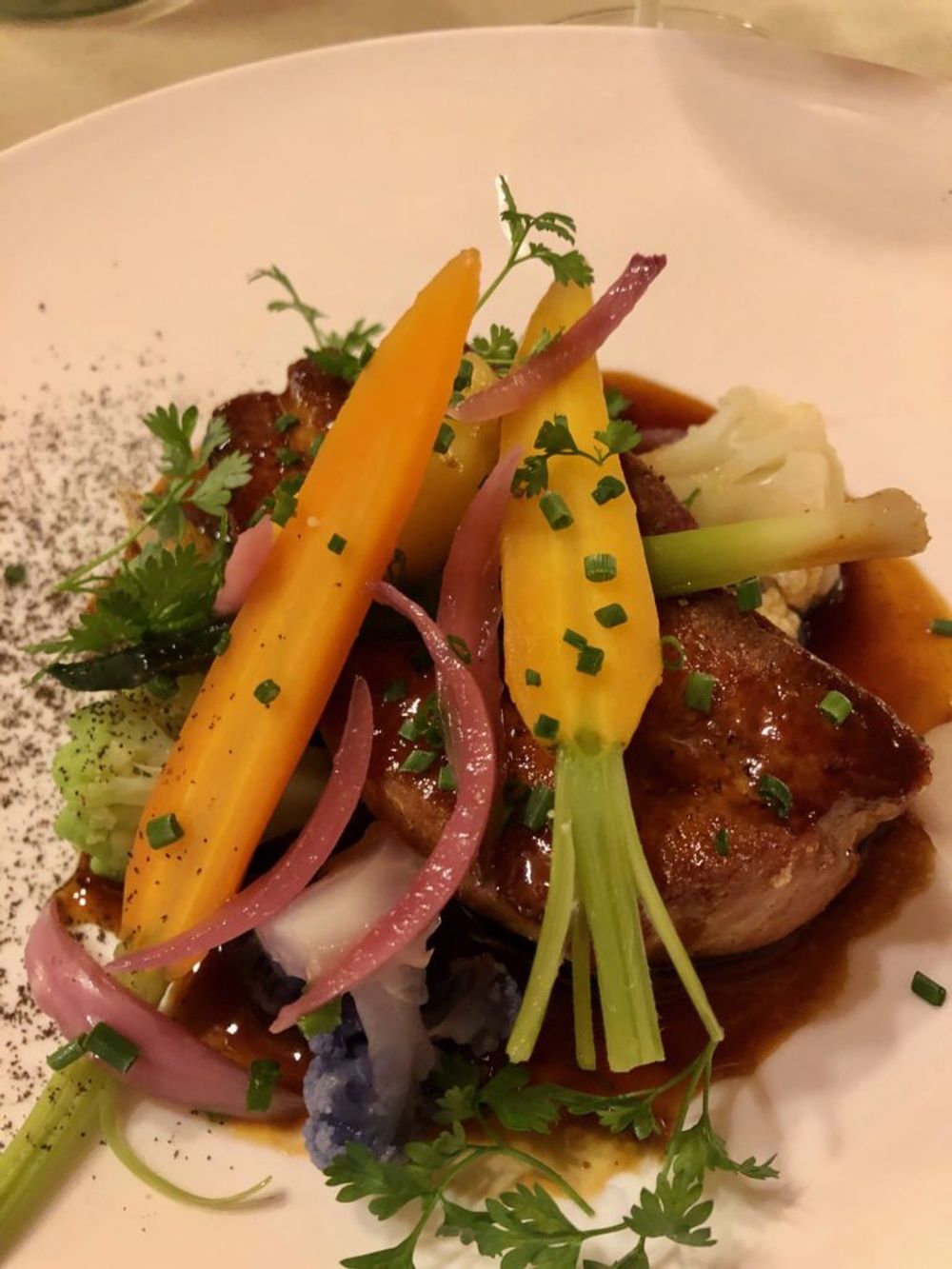
Our host on the second night was Emmanuelle Gallis, sales director at Cave de Turckheim, one of the most successful cooperatives in France, who named the UK as her top export market. This dinner was hosted at La Maison Rouge, which had a more modern British style to the food. Starting off with their Cremant, which is sold to Waitrose, to an excellent quality and value Pinot Blanc 2018, which was rich and creamy with a hint of fresh clean Chardonnay, to an excellent Pinot Noir 2015, which had been aged in Burgundy barrels and had vibrant fruit, was focused and excellent with a crispy slow cooked pork belly dish. The 2016 Old Vines Gewurtztraminer was again showcasing purity.

Steve Spurrier, one of the four judges on the trip
Setting out on a field trip to visit some of the greats
Our final morning saw us up bright and early and tasting with Celine Meyer of Josmeyer whilst most others would be having breakfast. A fascinating tasting through a quality range, highlighting this jewel in Pol Roger’s UK Portfolio. Celine and her sister Isabelle continue the incredible work that their late father Jean Meyer did, especially his work in changing the whole domaine to organic and biodynamic in 2000, lifting Josmeyer into the elite of Alsace wines.
We started with Josmeyer Sylvaner “Peau Rouge” 2018, Celine stated that this was a very fine and precise wine full of energy, which was a perfect start to the day. I loved the Pear William background to the wine, with a delicious, clean, dry palate, a hint of chalky minerality and a fresh, bright finish.
Josmeyer Pinot Blanc Mise du Printemps 2019, has 80% Pinot Auxerrois and 20% Pinot Blanc offering a wonderful insight into Asian fruits and flowers, kaffir, lime, yuzu, clementines and rose buds.
Josmeyer Pinot Auxerrois Vielles Vignes “H” 2017, Celine says it cannot be considered as a Grand Cru (due to the grape) but she clearly states it is, and my word what a stupendous wine, the purity, precision and balance are all à Point. These vines were planted by Celine’s grandfather in the 1960s, and was a dream of her father to make a great wine from a simple grape, which through three generations they have.
We went through five Rieslings, with the Josmeyer Grand Cru Hengst Samain Riesling 2014 being my highlight, and their top expression of Riesling. Concentrated with a defined acidity, purity with exciting spices, middle richness then a bone dry finish, a classic.
The Josmeyer Pinot Gris Un Certain Regard 2016, is picked early to keep its sea freshness, hints of marzipan, stone fruit, salty and, again, purity. We finished with their excellent value Josmeyer Gewurtztraminer Les Folastries 2016, rich but not sweet, reminiscent of Fry’s Turkish Delight chocolate bars, with oriental spices – again the words ‘purity’ and ‘precision’ are in my notes.
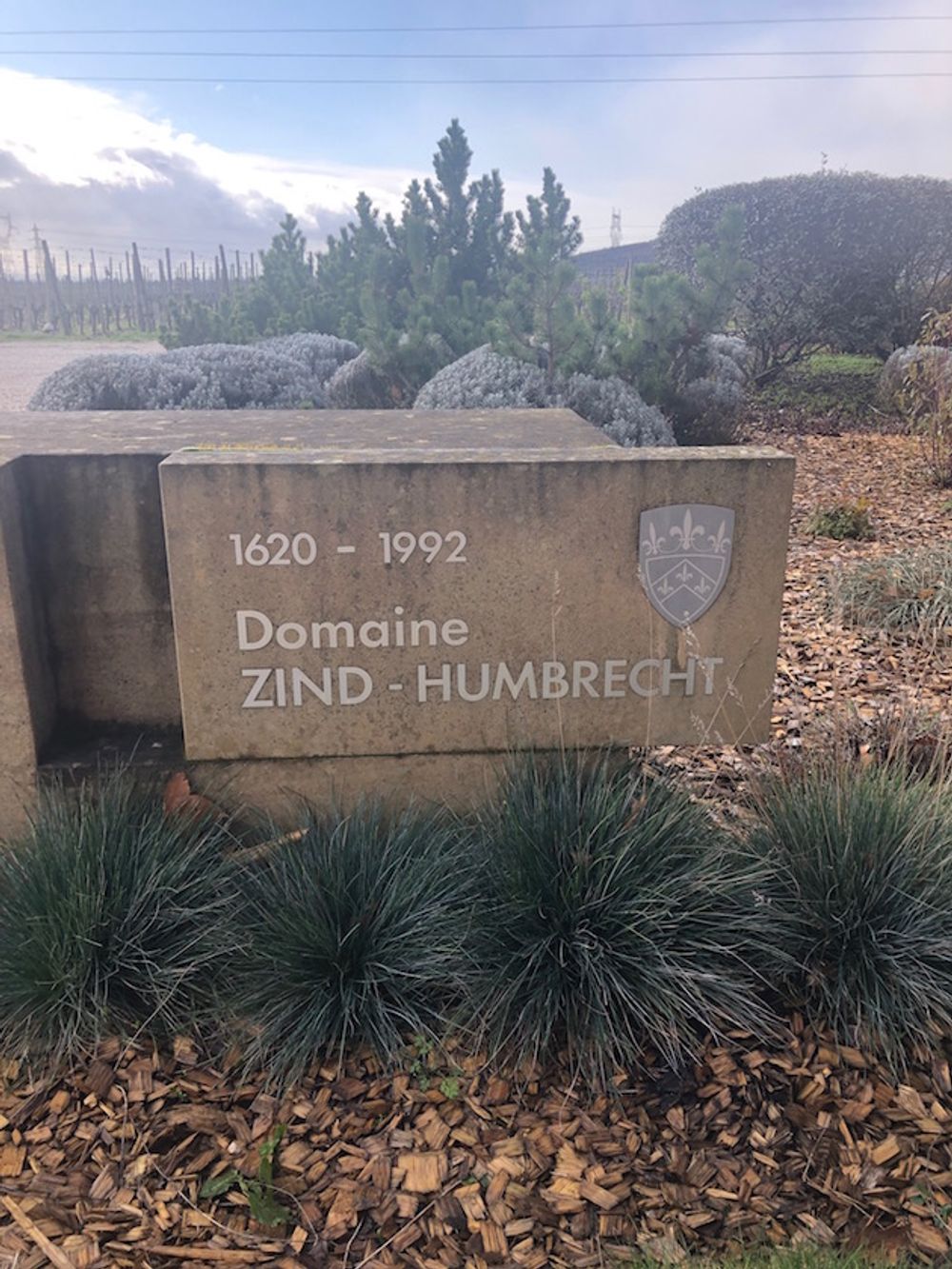
Celine then became our chauffeur taking us cross country to Domaine Zind-Humbrecht, where we were hosted by the concise-speaking Scotsman, Paul McKirdy, the current export manager but, as the former head winemaker, has an encyclopaedic knowledge of, not only Humbrecht’s wines, but all known wine facts. This was a speed tasting like no other, 18 wines back to 2001, hugely entertaining, knowledgeable and a great privilege to be at … and we were still not even at midday!
Pinot Gris was the highlight for Steven Spurrier at this esteemed estate, and McKirdy, who arrived in Alsace via working in an off licence in Australia was on form showcasing the variety of styles that Pinot Gris can produce from different soil types. If the 45 minutes we were there had been filmed it would have been a top YouTube hit. Paul’s mini quotes such as “Chenin is a victim of its own personality”, “Kerosine is a fault in Riesling”, and “Wines that taste ugly in cask make great wines”, (there were many more) no doubt livens up any export market he graces his presence with, having taken over this position from his wife who had been headhunted by another winery.
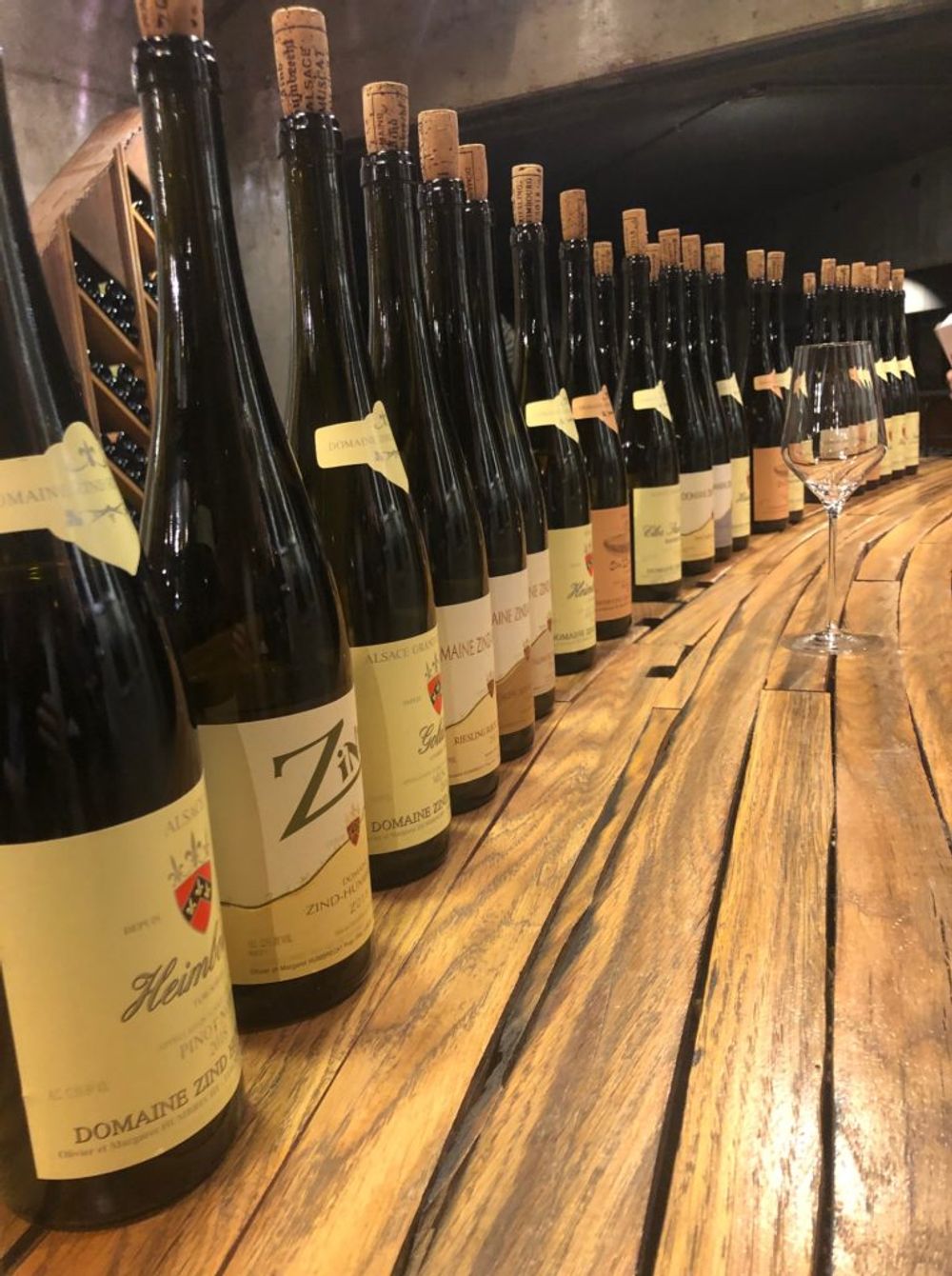
It would be foolish to pick a favourite, and I have not enough space to eulogise about all the beautiful wines we tried but the Zind-Humbrecht Clos Saint Urbain Rangen de Thann Grand Cru 2010 was a spectacular wine. The grapes developed some noble rot, enhanced by the steep south-facing slopes, the humidity and reflection from the River Thur, and the rocky soil that catches the sun’s reflection. This is a luscious wine reminiscent of Chateau D’Yquem in reflection of controlled sweetness and, with age, this will evolve even more; there is a golden green tinge to the colour, clementines, spices, even fresh baked Madeira cake, luscious, but with a purity that defies its indice5 (measure of sweetness marked on label).
There was little time to dwell on this remarkable experience as we had one more visit, lunch and a plane to catch to get back to the UK by 6.30 p.m.
Dirler-Cadé was our next visit, Ludivine & Jean Dirler hosted the tasting at the much lauded restaurant, A’ l’Arbre Vert.
Dirler-Cadé is made up of two family estates, brought together when Jean Dirler married Ludivine Cadé in 1998, taking over Ludivine’s parents’ plots in 2000. This biodynamic estate is also famous for being the pioneers of sparkling wine in the 19th Century, and revived this tradition with the launch of their Brut Cremant with the 2005 Vintage.
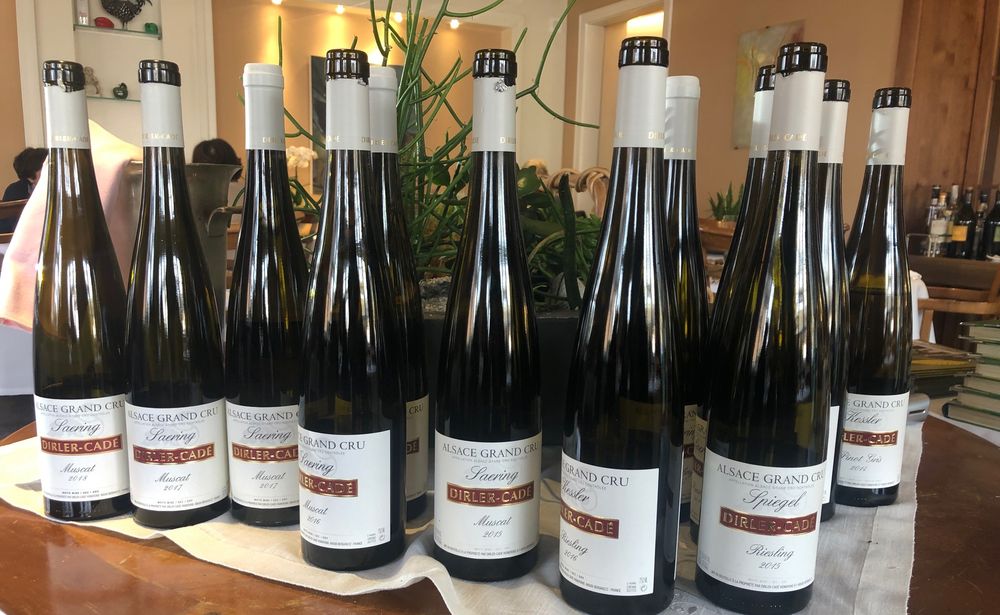
We were treated to our final celebration of white Alsace ‘grape varieties’, and what a treat, a Muscat Grand Cru masterclass, the Grand Cru Muscats from Dirler-Cadé being made from two Muscat grapes, Muscat Ottonel and Muscat d’Alsace.
Muscat, especially when discussing Grand Cru, offers full-bodied wines that are floral, fruity and capture the essence of the Muscat grape, juicy and fresh. Dirler-Cadé Muscat Grand Cru Saering 2016 was fresh and aromatic with a clementine and marzipan opening, the mid-palate was textured, but with an amazing citrus freshness that gave it a lovely lift, the 2015 was more restrained offering a complexity that aged Muscat produces so well, a balance between purity, freshness and depth in harmony. With 15 years age great Muscats develop a likeness to aged Chardonnay.
As I was having foie gras (my fellow tasters had bailed out to more lighter food by now) Jean insisted on opening a bottle of Dirler-Cadé Pinot Gris Grand Cru Kessler 2014 for me, this was bright and fresh with lots of white peaches, some tropical nuances, and a crispness to cut through the foie gras.
Four Grand Cru Rieslings followed, highlighted by the Dirler-Cadé Riesling Grand Cru Kessler 2016, which had a delicate perfume of white spring flowers, a mid-palate that was bright, rich and exotic; a minerality and clean-cut acidity balances the finish perfectly. All the Rieslings went well with the brilliant main course of Wild Skrei Cod with a delicate butter sauce and butter beans.
A couple of Grand Cru Gewurtztraminers finished the tasting and lunch, both superb with the Dirler-Cadé Gewurtztraminer Spiegeleisen Grand Cru 2016 just winning it, this was a beautiful wine that was rich without any flamboyance, having a precise balance of fruit to minerality and herbaceous notes.
And then it was back to London having captured a fabulous insight into Alsace wine, history and culture as well as gastronomy, thank you Alsace and CIVA.
































